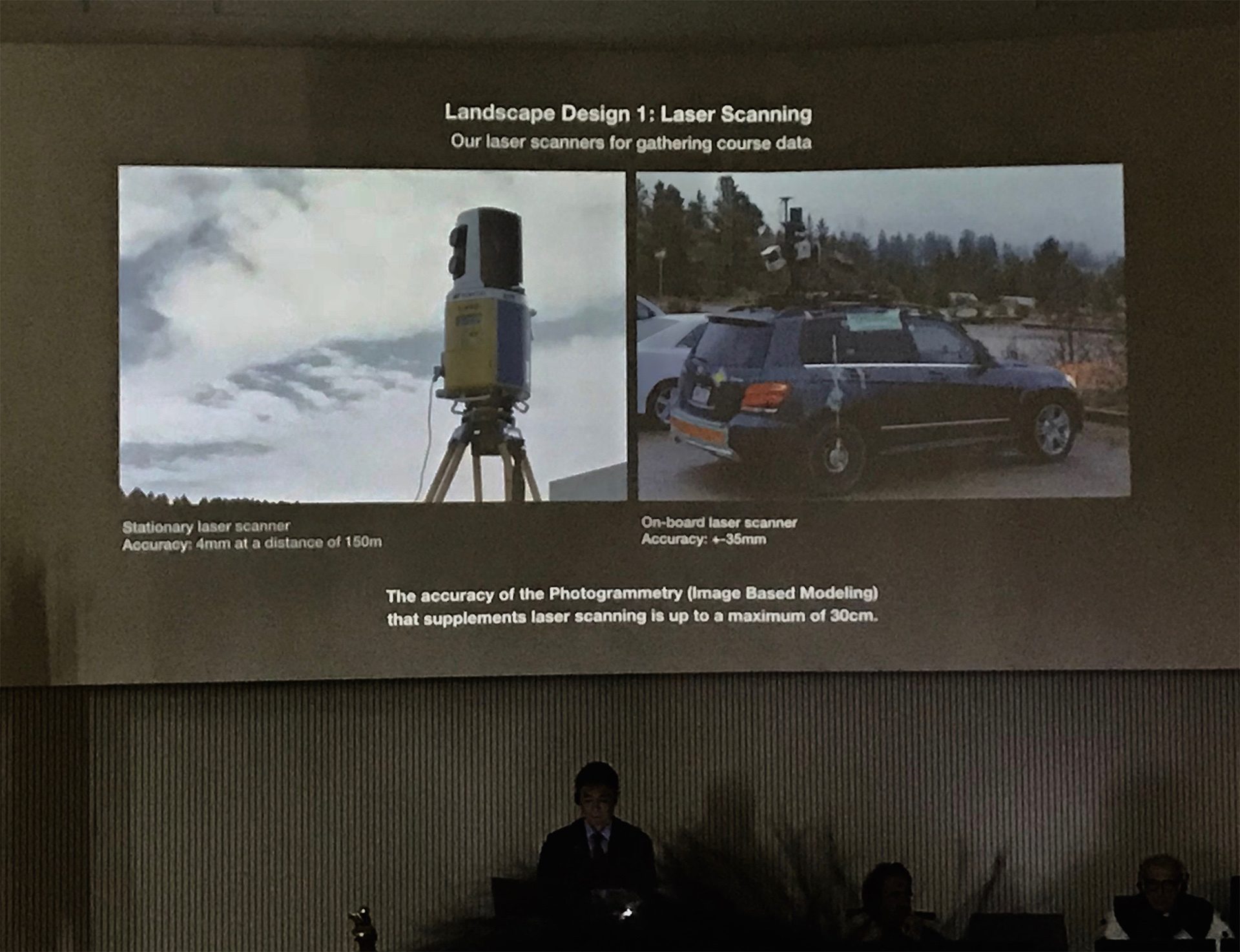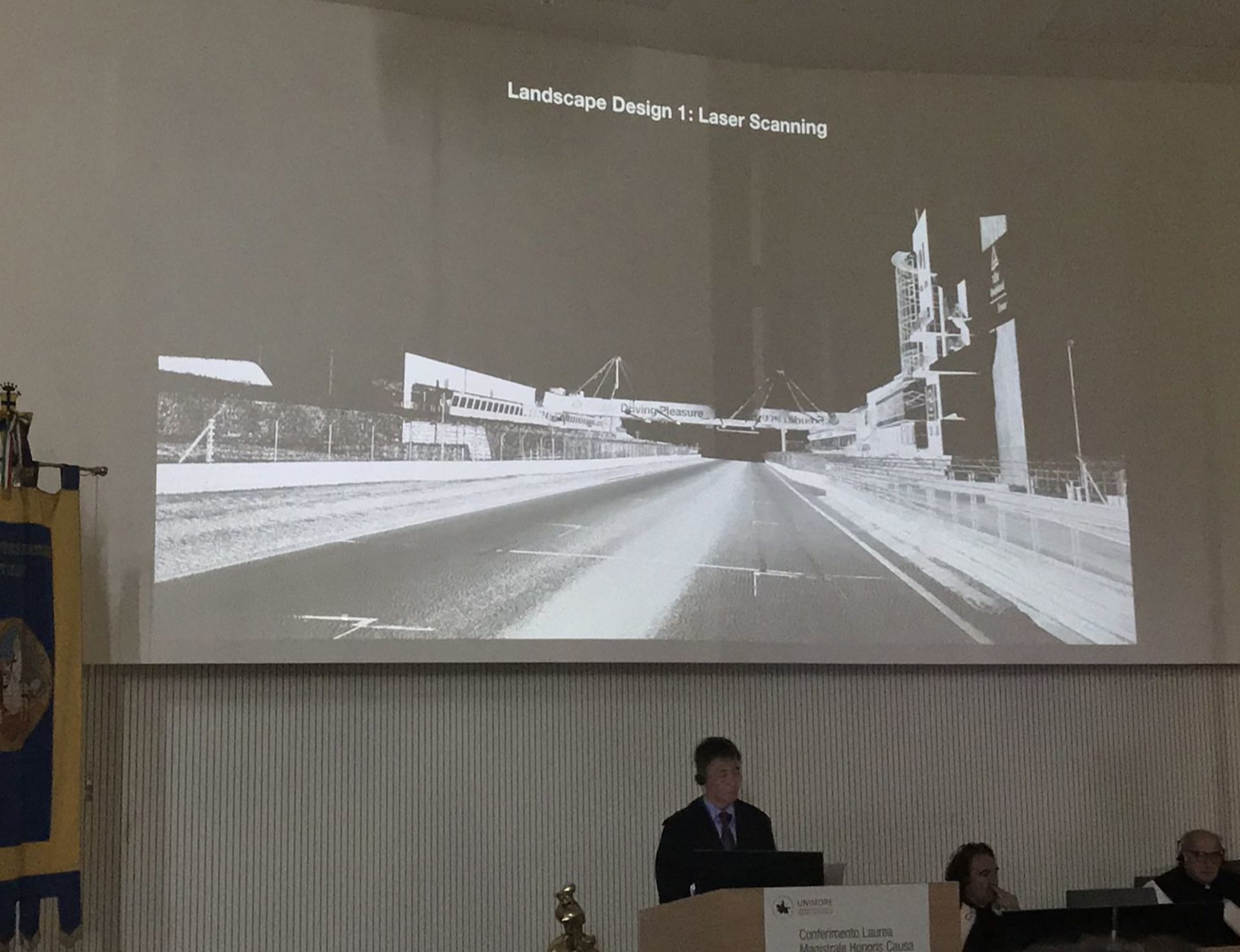You are using an out of date browser. It may not display this or other websites correctly.
You should upgrade or use an alternative browser.
You should upgrade or use an alternative browser.
Laser scanned tracks?
- Thread starter rex1825
- 27 comments
- 15,703 views
Depends which track you are referring too. At the time of release there was a big debate on the smother Le Mans in GTS but it was quickly found to be down to the track having been resurfaced in last couple of years. GTS uses current track other sims use pre-resurface track.
CJ
CJ
- 1,371

- Serbia
- Warlock__SRB
Depends which track you are referring too. At the time of release there was a big debate on the smother Le Mans in GTS but it was quickly found to be down to the track having been resurfaced in last couple of years. GTS uses current track other sims use pre-resurface track.
CJ
I'll check LeMans for sure now that you mentioned it, but here is part of the Willow Springs - Horse Thief Mile track, doesn't seem to be any more detailed then any other arcade game, and just for the sake of "this is not from GT" I added also Dragon Trail track.
Also checked Suzuka yesterday... disappointed as I said...
Now I'm wondering if they have a different way of making bumps react to suspension, for example coordinates in txt files or something... but still, it bothers me a lot... so much work put into a game, and no real surface... hope I am wrong, still have to check LeMans, but looking at Suzuka I really don't think there will be so much different...
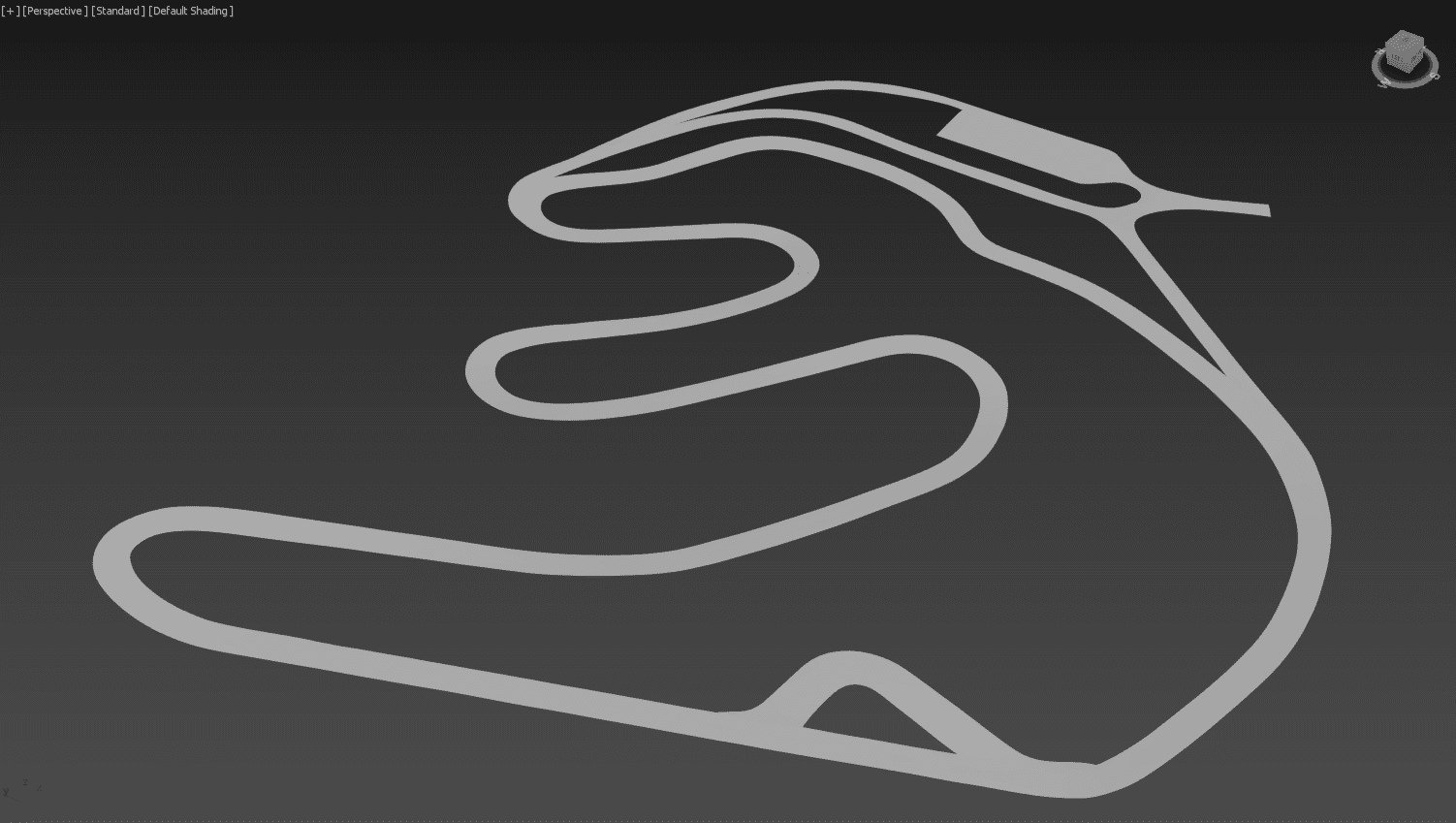
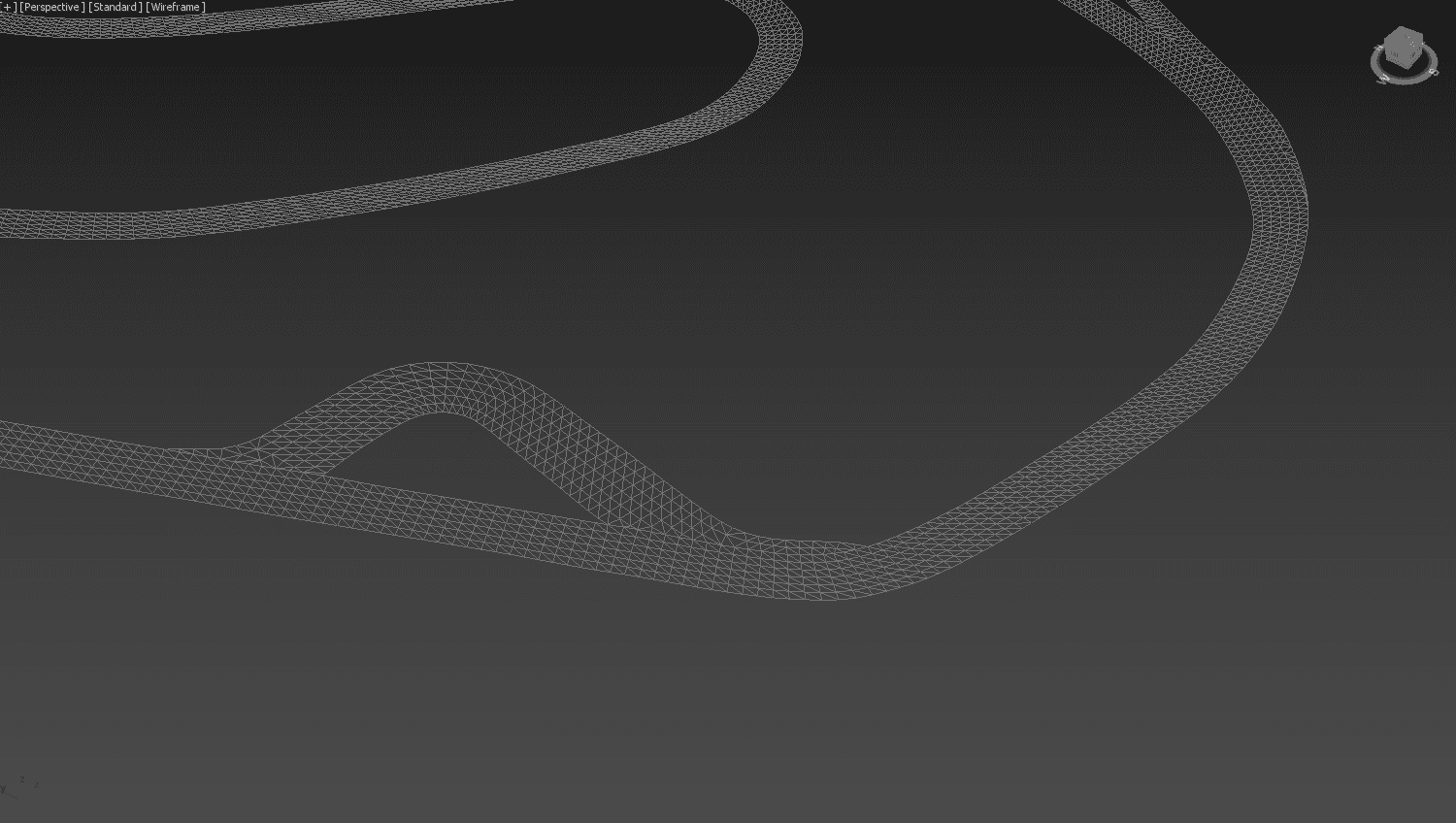
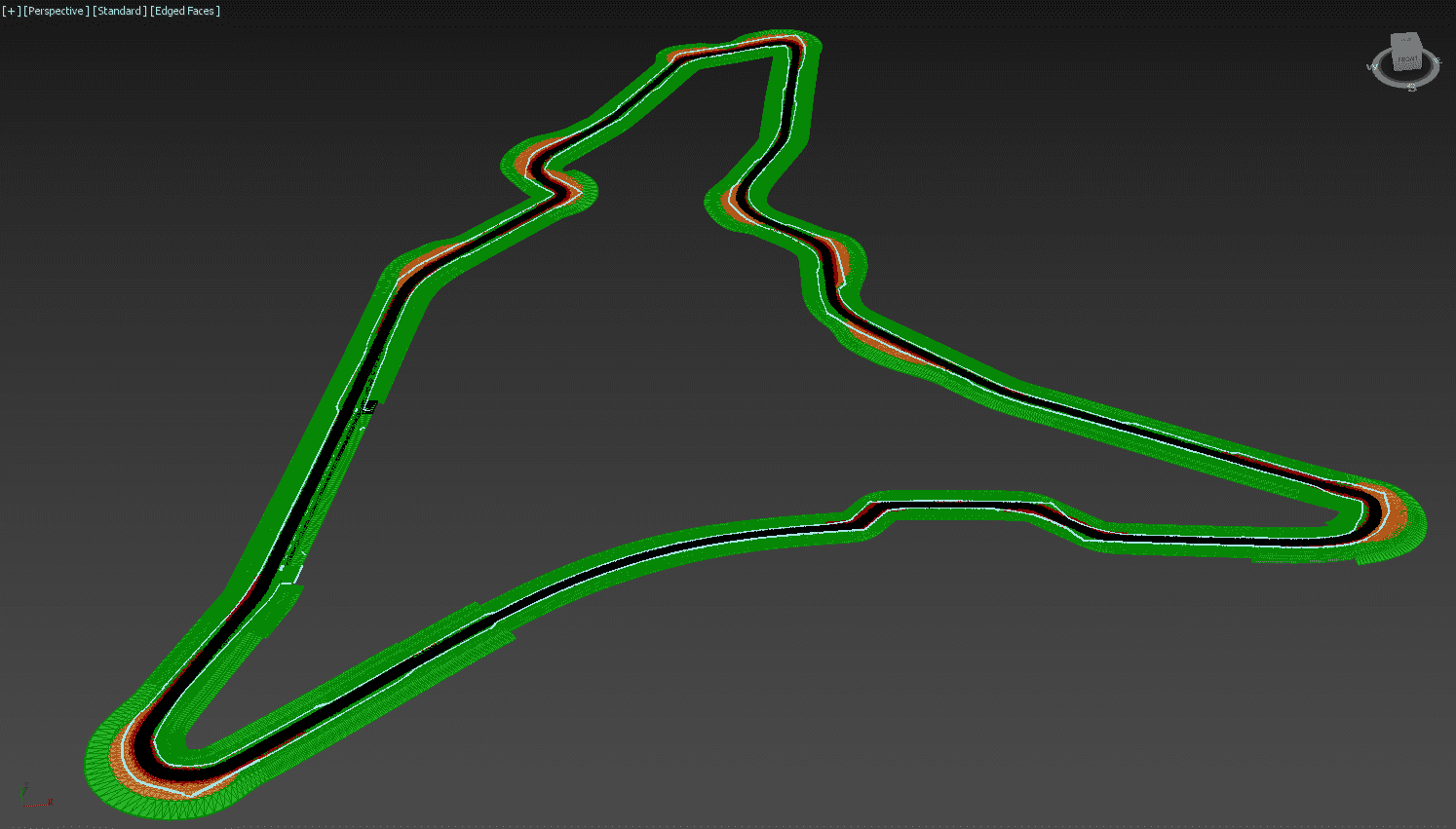
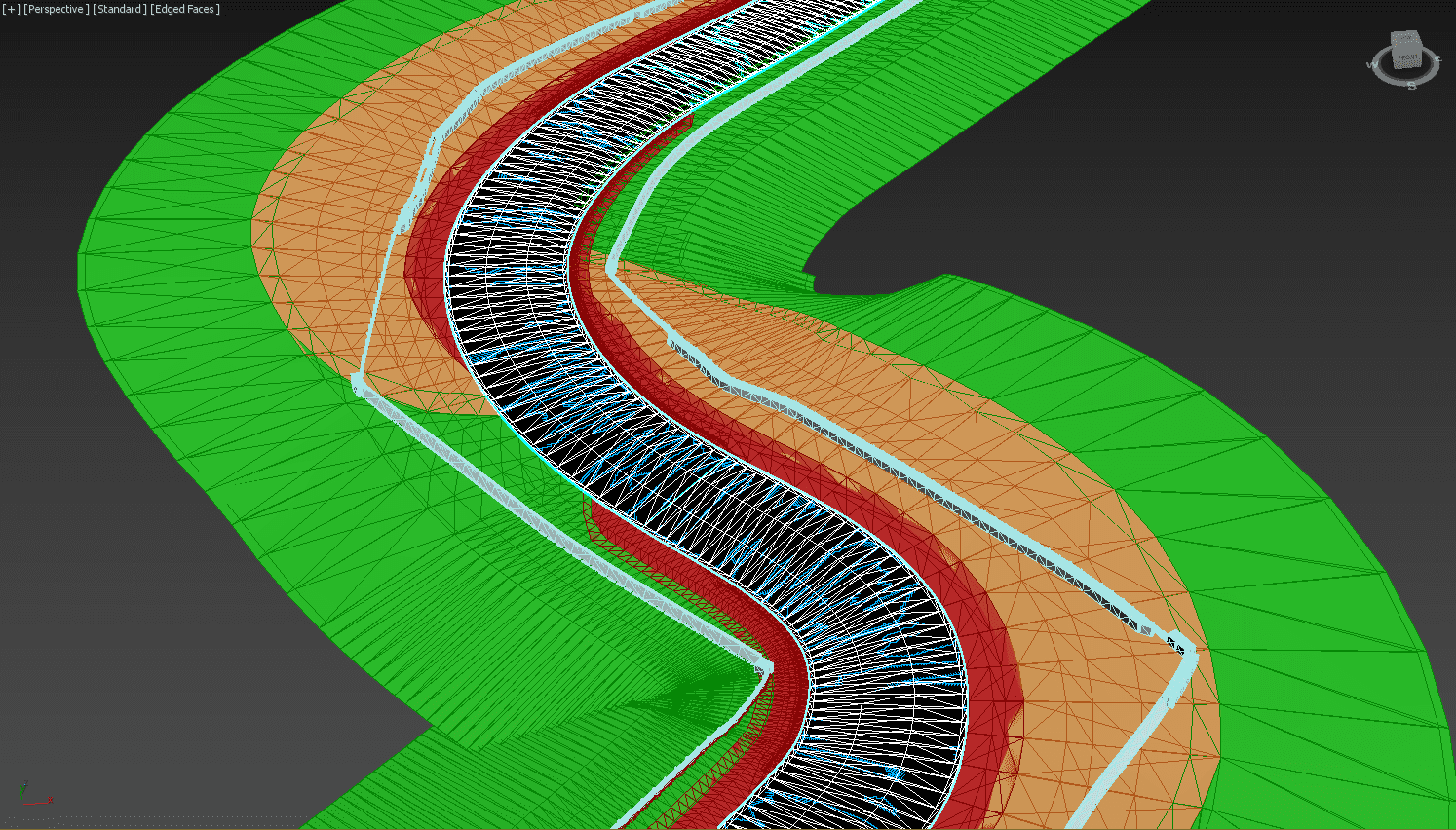
- 537

- Brazil
- fabr_123
I think all real tracks are laser scanned. Bumps are definitely there, you just don't feel them because of the game physics.Can someone confirm if GT Sport is using laser scanned tracks, because looking at the model of the track where all the details should be, it doesn't seem so? ...there are no bumps on the road, like in Assetto Corsa for example.
I am a bit disappointed TBH...
- 294

- Taiwan
Can someone confirm if GT Sport is using laser scanned tracks, because looking at the model of the track where all the details should be, it doesn't seem so? ...there are no bumps on the road, like in Assetto Corsa for example.
I am a bit disappointed TBH...
(Sorry, please turn on the caption if you need it
 )
)Since GT6, laser scanned for "all real track".
And I don't think they need to repeatedly emphasize "We have laser scanning".
While time and technology are moving forward, laser scanning is naturally used by the immersive racing game production teams..
like Polyphony Digital, Turn 10 Studios, Slightly Mad Studios, Kunos Simulazioni and many other teams.
Last edited:
- 16,431

- United Kingdom
Personally I'd divorce the concept of Laser Scanning from bumps - if PD want bumps, they can put them in on either real of original circuits.
I know laser scanning can be highly accurate, but given the size of the data you'd then end up with, do games really use it at that resolution, or even scan it at that resolution, and do they use it purely for graphical representation at the same resolution they use it for the physics model - I mean, it's very difficult to orientate the camera in a way that would show up most bumps, so they don't need to be in a visual model I would guess.
I know laser scanning can be highly accurate, but given the size of the data you'd then end up with, do games really use it at that resolution, or even scan it at that resolution, and do they use it purely for graphical representation at the same resolution they use it for the physics model - I mean, it's very difficult to orientate the camera in a way that would show up most bumps, so they don't need to be in a visual model I would guess.
- 1,371

- Serbia
- Warlock__SRB
Personally I'd divorce the concept of Laser Scanning from bumps - if PD want bumps, they can put them in on either real of original circuits.
I know laser scanning can be highly accurate, but given the size of the data you'd then end up with, do games really use it at that resolution, or even scan it at that resolution, and do they use it purely for graphical representation at the same resolution they use it for the physics model - I mean, it's very difficult to orientate the camera in a way that would show up most bumps, so they don't need to be in a visual model I would guess.
As far as I know, Assetto Corsa has 20x20mm resolution on every track they did... not sure for iRacing and rFactor though...
- 16,431

- United Kingdom
As far as I know, Assetto Corsa has 20x20mm resolution on every track they did... not sure for iRacing and rFactor though...
Is that what they scanned, or what's present in the visual and/or physics model? It's fag packet maths but that'd give the Nordschleife a poly count of more than half a billion... that sounds like a big number to me... but I've no idea if it is or not?
Also only fag packet maths, but even if each of 4 tyres was only interacting with 1 point underneath them, at 155mph that would be 13,840 calculations per second to make use of it from a physics point of view... again, no idea if this is representative of anything or not, but it seems like quite big number again.
.. where I'm going with this is, claiming a 20mm×20mm resolution sounds impressive, but does the translate 1 to 1 into the gaming experience.
Open question, I'd be curious to know.
- 1,371

- Serbia
- Warlock__SRB
Is that what they scanned, or what's present in the visual and/or physics model? It's fag packet maths but that'd give the Nordschleife a poly count of more than half a billion... that sounds like a big number to me... but I've no idea if it is or not?
Also only fag packet maths, but even if each of 4 tyres was only interacting with 1 point underneath them, at 155mph that would be 13,840 calculations per second to make use of it from a physics point of view... again, no idea if this is representative of anything or not, but it seems like quite big number again.
.. where I'm going with this is, claiming a 20mm×20mm resolution sounds impressive, but does the translate 1 to 1 into the gaming experience.
Open question, I'd be curious to know.
...that is scanned thing, in game they made interpolations and got some of those numbers down since it was a bit too much, but still, every part of the track feels different...
- 175

- Lamia city
I think is just the FFb over all. There is hardly any roadfeel from the track to our wheel. Some tracks have some road feel were it seems obvious and some tracks have some bumps in a flat area (at least as i can see through the visuals of the game).
Check Nordschleife back to back with the same car on GTS and Assetto Corsa. You can really feel the surface with the AC's version.
Check Nordschleife back to back with the same car on GTS and Assetto Corsa. You can really feel the surface with the AC's version.
- 717

- United States
...that is scanned thing, in game they made interpolations and got some of those numbers down since it was a bit too much, but still, every part of the track feels different...
Have you seen the track geo for AC? Where do you think the 20x20mm resolution is, it certainly isnt in the track geo.
- 1,371

- Serbia
- Warlock__SRB
I saw many of the track geo in AC, was modder from the very begining of the games life cycle. There are parts on almost every track (that are laser scanned) where geometry is down to 20x20mm in height difference... With some of the tracks my old PC was strugling to open...Have you seen the track geo for AC? Where do you think the 20x20mm resolution is, it certainly isnt in the track geo.
I see no problem opening GTS tracks... So either geometry for drivable mesh is in some file, but I doubth since there is collider mesh for every track within main geo that is used for texturing...
- 717

- United States
I saw many of the track geo in AC, was modder from the very begining of the games life cycle. There are parts on almost every track (that are laser scanned) where geometry is down to 20x20mm in height difference... With some of the tracks my old PC was strugling to open...
I see no problem opening GTS tracks... So either geometry for drivable mesh is in some file, but I doubth since there is collider mesh for every track within main geo that is used for texturing...
You were able to load whole GTS tracks? Or are you talking about the simple track outline in your pics?
I uninstalled AC awhile back but remember seeing the track geo being standard fare also from AC dev videos of them making tracks.
Edit: I guess that was from the track editor and different from the scanned tracks
Last edited:
- 1,371

- Serbia
- Warlock__SRB
You were able to load whole GTS tracks? Or are you talking about the simple track outline in your pics?
I uninstalled AC awhile back but remember seeing the track geo being standard fare also from AC dev videos of them making tracks.
Edit: I guess that was from the track editor and different from the scanned tracks
...it is not the place to discuss this, but yeah, I can load whole tracks in 3DS Max or any other 3D software, thanks to some guys out there

And as I said, there is nothing compared to any sim (although it is not sim) but all track models that I saw are basically same as in previous GT installments. Only difference is the texturing...
- 622

- Malaysia
- bazet_mpower
Maybe licensed extra detail ffb by using Thrustmaster T-GT would be able to enjoy those bumps delivered via extra transducer
- 11,660
- GTP_Orido
Have you compared the same laser scanned track on 2 different games ? They should be similar and not worlds apart in bump details/accuracy if they used the same scan data source.
With laser scanned tracks, the game would need to use laser scan physical mesh/vertices of the track for physics simulation for maximum possible details, what you see when playing have different polygonal visual meshes which are simpler and less detailed. The point clouds scanned by laser scanner are very dense that if they are reproduced in real time while playing would be very GPU intensive, and would make the performance drop massively ( fps )
Another reason, the details like bump that you feel in a game is limited by the physics tick rate ( different games have different rate, Pcars I think 600Hz ), and to maintain fidelity as the original physical mesh if its way denser/higher in accuracy for the tick rate, sometimes compacting the vertices/mesh to bigger spacing is preferable, like 0.2m or 0.3m ( Iracing used 0.3m if not mistaken ) from original 2-10mm ( just example ). The effect of this may lead to loss of details in mathematical maps or sometimes depend on the bump,cracks,patches, undulations size ( larger/wider/deeper/higher bump/dips ), amplified.
Physics road surface output maybe adjusted in relation to FFB ( not sure if this is done in AC ), but I read that there is road effect for FFB setting ?
There's also the issue of different laser scan equipment quality used to capture the data and different version ( from different date/condition )
The source of the laser scanned data alone plays huge role in the quality of source data ( mm or cm accuracy ), and the process to bring it into the game and work with the physics engine.
That's now how tick rate can be perceivedIt's not only physics tick rate, but the game input rate and wheel FFB update rate also factors in how much detail one received. So, we have physics tick rate - input rate - wheel FFB update rate = what driver feels.
Most steering wheels like DFGT, G27, Fanated GT3, T500RS are at most 500Hz with 2ms delay and 9-20+ms latency ( with latency, the game frame rate also related in how the driver can respond, but most games are in 60fps anyway ) So, no matter how high the game physics tick rate and input rate, the wheel FFB rate ultimately decide how much details the driver received. Expensive wheels said can have up to 1000Hz FFB ratewhich is higher than most if not any sims out there, AMS runs at "upscaled" 720Hz physics rate and 500Hz input rate.
I have read before that AC is about 300-400Hz in physics tick rate and the highest the traction control system used in AC has 400Hz tick rate, but anyone with info from Kunos, feel free to correct me
There's a way to test how high physics tick rate ( roughly ), but it's not accurate measure. Physics tick rate influence the stability of the physics when dealing high/large force on a small mass, when tick rate is not high enough, strange things happen that often seen as glitch like jumping cars. When a game limits the damper highest value or spring value on cars in lighter mass range, then this is usually caused by the limitation in physics tick rate.
This is what LFS dev, Schawen said on the matter and why he set LFS to run at 2000Hz :
"One example in LFS is the spring above the wheel which is supported by a tyre below. The wheel is light compared with those two large spring effects and can easily cause instability. That is the reason for LFS's high update rate of 2000 Hz in the sub-updates, which avoids the cars jumping up and down all on their own due to jumping wheels! You saw in the google video, at one point, in a crash when some vertices went a bit wrong.
What happens is you have some very stiff springs for the chassis members, supporting a node which let's say is 10 kg. The physics engine finds out in one update that the springs are stretched by 5 cm. Now the super string spring applies a force of [A LOT] to that 10 kg mass. So in the next update you find that 10 kg mass has gone maybe 10 metres away or whatever, when really it should only have moved a mm or so.
The update time steps must be small enough so that large force acting on the small mass at the node, doesn't push the node too far away."
So, simple test, crank up the damper and spring rate on lightweight race cars in AC, and see if strange thing happen when driving on the track ( if Kunos didn't limit these yet )
This is a list of some games physics tick rate that I gathered from LFS forum :
'98 Sports Car GT - 50 Hz [from Blackhole Motorsports article]
'98 Viper Racing - 60 Hz (general) / 300 Hz (some aspects) [email with Dave Broske]
'98 Grand Prix Legends - 144 Hz
'00 F1 2000 - 50 Hz [from Blackhole Motorsports article]
'00-'08 Racer - 300 Hz (general) / 3000-30,000 Hz (tyre rotation) [posted by Ruud in a thread archive on racer.nl, dated '01]
'01 F1 2001 - 200 Hz [from Blackhole Motorsports article]
'02 Total Immersion Racing - 100 Hz (uses RK4) [from press release]
'02-'08 Live For Speed - 100 Hz (collision detection) / 2000 Hz (vehicle dynamics) [posted by Scawen on lfsforum]
'03 NASCAR Racing 2003 Season - 288 Hz (possibly)
'04 VirtualRC Racing v1.0 - 300 Hz (general) / 600 Hz (tyre model) [posted by Todd on lfsforum]
'05 VirtualRC Racing v3.0 - 250 Hz (general) / 500 or 1000 Hz (tyre model) [posted by Todd on lfsforum]
'05 rFactor - 400 Hz
'05 Forza Motorsport - 180 Hz
'06 Test Drive Unlimited - 100 Hz (collision detection) / 1000 Hz (vehicle dynamics)
'06 netKar Pro - 333 Hz [posted by Kunos on RSC]
'07 Forza Motorsport 2 - 360 Hz [from wikipedia article]
'07 Rigs Of Rods - 2000 Hz [from ROR forums]
'08 Ferrari Challenge: Trofeo Pirelli - 60 Hz
'08 rFactor Pro - 800 Hz [from official website]
'08 iRacing - 360 Hz [from AutoSimSport]
'09 Supercar Challenge - 60 Hz
'09 Need For Speed: Shift - 180 Hz / might be 360 Hz (effective due to 2 physics passes per timestep?)
'09 Forza Motorsport 3 - 360 Hz [from gamespot article]
Motorsport - 333 Hz (but still being tuned) [posted by Stenyak on RSC]
UPDATE : ASSETTO CORSA - 250Hz - from Kunos presentation on console port/dev.
AC didn't go much higher than Kunos previous release Netkar Pro if 400Hz is true.
The Automobilista runs upscaled 720 Hz physics and 500 Hz input rates (vs 360 Hz &100 Hz respectively in SCE) ( Reiza own statement )
So, when playing with wheel, make sure it's setup at highest update rate to fully utilized the wheel ability.
In relation to laser scanned track details like bumps to physics tick rate, Iracing has 360Hz, and most drivers average speed on the track would be higher than 100kmh, rarely do driver go below 50kmh when racing or time trialing. Say a driver goes to 100kmh, or 27.77m per second, with physics at 360Hz ( 360 refresh per second ), 27.77x1000/360 = 77.138mm, that's the most detail a driver can feel from the road when driving at that speed, not considering the wheel FFB rate. If wheel FFB is capable of more than 360Hz update rate, than driver can enjoy what the physics provide. What if the driver goes slower at 50kmh ? 13.888x1000/360 = 38.58mm, at slower speed, the driver can hypothetically sense more of the road surface details within 38.58mm distance accuracy ( 4cm ) going at 13.88m/s. The faster the driver goes, the longer the distance for details, 200kmh = 154.27mm. Iracing input rate is 120Hz ( from what I read on other forum ), that means what the wheel FFB can receive is limited to the 120Hz rate, and at 50kmh, that would be 115.73mm ( can a driver accurately sensed 11.5cm FFB detail like little bumps going at 13.88m/s ) , 100kmh = 213.41mm and at 200kmh = 462.95mm ( 46+cm )
I think this is one of the reason why Iracing said to have spaced the physical mesh/vertices to 0.3m / 30cm to balance between physics rate/input rate/system load ( the lower the spacing in physical mesh/vertices, the heavier the calculation ), which should be clear by now, that laser scan mm accuracy is often just marketing/selling point. All of this is based on what I understand from LFS forum discussion and other forum on physics/laser scan and FFB rate, so I may make a mistake, please correct me if I'm wrong
A list of wheel update rates ( old source )
http://www.insidesimracing.tv/forums/viewtopic.php?f=159&t=4327
Code:
Logitec G25 (900 deg)
500 hz update rate (2ms delay)
9-10 ms latency (first move)
Logitec G27 (900 deg)
500 hz update rate (2ms delay)
9-10 ms latency (first move)
Fanatec GT3 (900 deg)
500 hz update rate (2ms delay)
14 ms latency (first move)
Thrustmaster T500RS (tested at 900 deg, 1080 deg total)
120 hz update rate (8ms delay) - Have been updated to 500Hz in 2012, FW V40 and on
20-23 ms latency (first move)
Logitec DFP (Driving Force Pro) (900 deg)
120 hz update rate (8ms delay)
28 ms latency (first move)
Red Momo (240 deg)
120 hz update rate (8ms delay)
44 ms latency (first move)
Black Momo (240 deg)
120 hz update rate (8ms delay)
35 ms latency (first move)
Saitek R660 GT (180 deg)
120 hz update rate (8ms delay)
44 ms latency (first move)
Sidewinder 2 joystick
34-37 ms latency
8 ms update rate
Logitec Force 3D joystick
34 ms latency (67 & 74 with wind up at end of travel)
8 ms update rate
Thrustmaster F430 (270 deg)
60 hz update rate (16 ms delay)
38 ms latency (first move)
ECCI 7000 (900 deg ?)
60 hz update rate (16 ms delay)
43 ms latency (first move)
Microsoft Sidewinder Wheel USB (red) (240 deg)
60 hz update rate (14-16ms delay)
44 ms latency (first move)
***Driver takes 8-16ms just to return from a call to getPosition and
setForce
Logitech Driving Force GT (DFGT) (900 deg)
500 hz update rate (2ms delay)
17 ms latency (first move)
VPP
56 ms latency
8ms update rate (driver takes 24 ms after update!)
calls to getPosition take 8-16 ms to return and up to 56 ms when applying a
force!
Frex
44 ms latency
16 ms update rate
For those who wondered about laser scan, this was posted long ago, hope it can help
 It's not sure fire guarantee to provide ultra realistic simulation, there are many aspects to consider. The last quote has been updated with AC physics rate.
It's not sure fire guarantee to provide ultra realistic simulation, there are many aspects to consider. The last quote has been updated with AC physics rate.- 3,364

- Slovakia
- dawko-san
That is because Assetto Corsa's Nurburgring was scanned before GTS' was. There were numerous changes made to the track between the scanning took place.Can someone confirm if GT Sport is using laser scanned tracks, because looking at the model of the track where all the details should be, it doesn't seem so? ...there are no bumps on the road, like in Assetto Corsa for example.
I am a bit disappointed TBH...
An easy way to compare is watch 2018 vids of nurb and see where cars react to bumps and dips and see which tracks have the same in the same spots .
Not so easy as there can be parts of the track resurfaced after the scanning.
- 2,913

- UK
- phil_75
The track is not resurfaced from front to back every year. Anyone can watch on youtube car day at the nurb and see were the bump and whooops are. It is that easy
Bumps and whooops

retrostate
Premium
- 117

- United Kingdom
- GTP_Retrostate
Can someone confirm if GT Sport is using laser scanned tracks, because looking at the model of the track where all the details should be, it doesn't seem so? ...there are no bumps on the road, like in Assetto Corsa for example.
I am a bit disappointed TBH...
The answer is yes.
Also, other sims aren’t necessarily using accurate scan data, some only drone based capture, or no data at all...
Comparing game to game is hugely unreliable
- 24

- Russian Federation
I wonder what the new ring will be like all smooth and more grip
2,5 км out of more than 20 km, what "the new ring" are you talking about?
- 2,006

- Austria
“They are using very impressive, very complex methods to digitize the circuits,”
“They use photos from helicopters, GPS, Differential GPS and laser scans to build a 3D circuit. It is the kind of technology F1 teams usually use with their simulators.”
https://www.fia.com/sites/default/files/auto8.pdf
“They use photos from helicopters, GPS, Differential GPS and laser scans to build a 3D circuit. It is the kind of technology F1 teams usually use with their simulators.”
https://www.fia.com/sites/default/files/auto8.pdf
- 1,167

- Paradera
- SDSPOWER01
Many developers uses laser scanning nowadays, and I am sure it must be a lot of data involved.
I may know nothing of laser scanning or how it works but perhaps some uses this data to translate into the force feedback as much as possible via physics or some use this data for visual representation with minor physical simulation.
It all depends on what developer chooses as priorities and in this case GT Sport goes for mostly Graphical quality with a simplified physics and force feedback.
So yes there is Laser Scanning involved but they get to choose how much of the data captured they use and in which area.
I may know nothing of laser scanning or how it works but perhaps some uses this data to translate into the force feedback as much as possible via physics or some use this data for visual representation with minor physical simulation.
It all depends on what developer chooses as priorities and in this case GT Sport goes for mostly Graphical quality with a simplified physics and force feedback.
So yes there is Laser Scanning involved but they get to choose how much of the data captured they use and in which area.
- 717

- United States
2,5 км out of more than 20 km, what "the new ring" are you talking about?
 "new resurfaced sections" Happy?
"new resurfaced sections" Happy?I wonder who'll do the first graffiti

